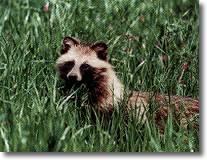



To the left are Horseshoe bats. They come from China, Australia, Wales and Wales respectively. In a paper to be published in PNAS, researchers have discovered a genetic relative of the SARS virus in Horeshoe bats.
From The Globe and Mail:
Scientists from State Key Laboratory of Emerging Infectious Diseases and the University of Hong Kong found a new coronavirus that was 40 per cent similar to the human SARS coronavirus in cave-dwelling Chinese horseshoe bats in Hong Kong. They proposed that the newly identified virus be known as the bat SARS coronavirus.
Their findings were published online Friday by the journal the Proceedings of the National Academy of Sciences.
Bats have previously been identified as important reservoirs for a number of zoonotic viruses — viruses that can jump from animals to humans — including rabies, the Hendra and Nipah virus and St. Louis encephalitis.
The scientists ran tests on anal swabs taken from 59 bats; 39 per cent of them carried the virus. Blood drawn from the bats suggested between 67 and 84 per cent (the differences related to the test used) had previously been infected with the virus.
The team has yet to test the bat virus to see how pathogenic it is, or whether it can infect other species.
Molecular analysis of the virus showed it is the closest known virus to the human SARS virus, with the exception of a SARS virus isolated from palm civets and raccoon dogs.
The story is a little more complicated, however. The research indicates that the bat and human coranaviruses are serparated by about 100 years of evolution. Which implies some other species are carrying the virus that jumped into humans. Previously, it had been thought that the disease jumped into humans from civets...

or tanuki...

However, recent tests on wild civets found no trace of the coronavirus:
But evidence later emerged that threw that theory into question. For instance, the virus was found only in civet cats in the crowded markets, not in wild or farmed civet cats. That suggests the market cats were infected by another as-yet unidentified animal.
Dr. Brown (an expert in viral evolution at the University of Ontario - afarensis)said the finding underscores the importance of learning more about the range of viruses lurking in nature.
“Historically we worry about viruses that infect ourselves or our pets or the things we eat. And otherwise we just don't care,” he noted.
“I think probably in the long run we have to care a bit more about the whole biosphere to try to link things up. We do have to know a bit of what's out there and moves into people and that sort of thing.”
To learn more about bats go here.
Sounds of Freetailed Bats








